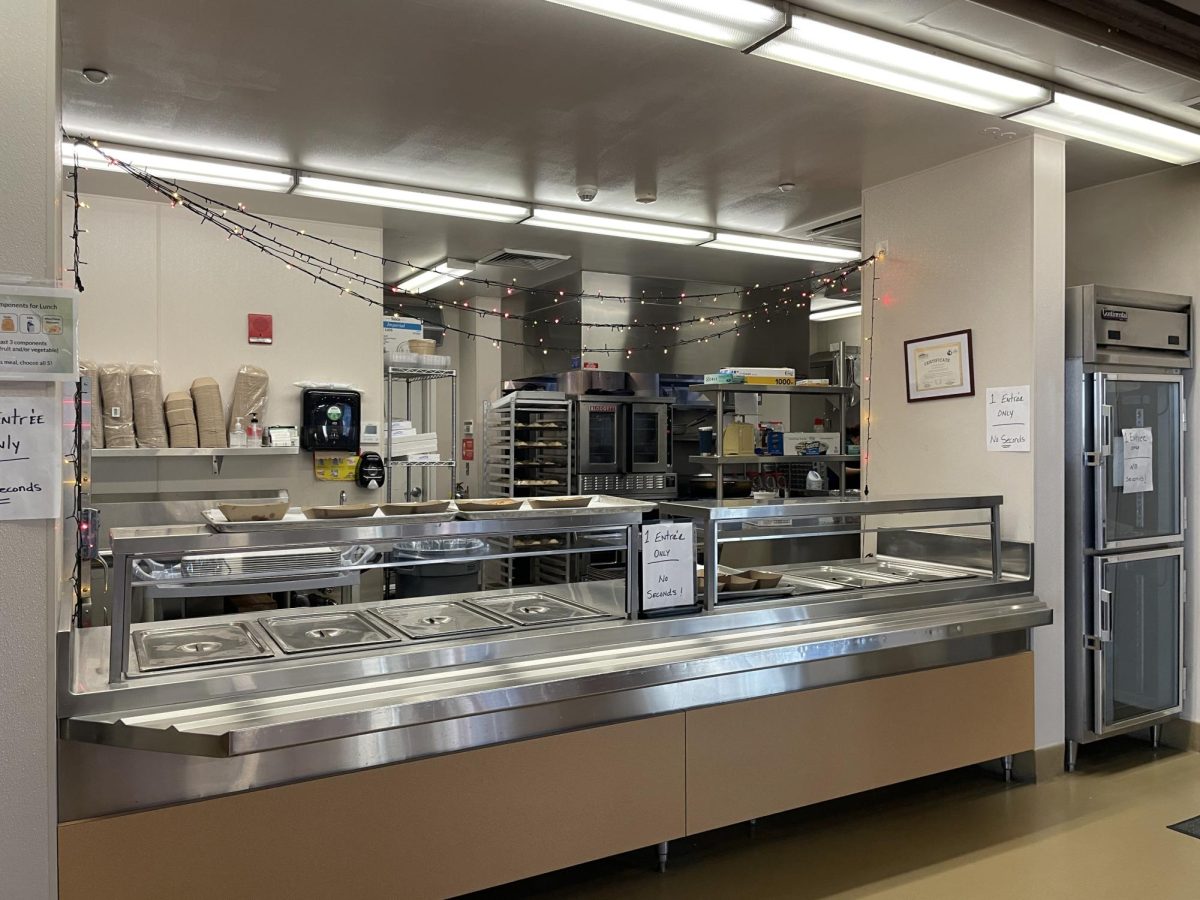The bell rings and lunch has begun. Students flock to meet their friends and enjoy their mid-day break. People filter into the cafeteria, grab some food, and then go off elsewhere to relax before resuming classes. Most times with little consideration for where the cafeteria food even came from.
Dani Saraceno is the food services manager at Truckee High School. If you have ever gotten lunch you might have seen her behind the counter dishing food out or sitting at the end of the lunch line making sure you put your ID code in.
For her, the day starts at 6:30, when she arrives to start preparing the breakfast that is served during break, “Today was pancakes with fruit sauce, it takes a lot of scratch cooking” Saraceno says pointing to the breakfast foods sitting out on the counter, “We made the berry sauce, and from there it’s a matter of heating and assembling breakfast.”
Saraceno and the rest of the kitchen staff are responsible for roughly 150 breakfasts and 200 lunches per day. Meaning over 63,000 meals are made and prepared every school year at Truckee High alone. So where do they even start?
“People think we open up a box of frozen food and heat it up. Well, that’s how it used to be, but now we’re doing scratch cooking” says Saraceno. Every meal the cafeteria serves has to be at least partly prepared and made from scratch.
For example Saraceno shares, “Like when we make Hawaiian pork bowls, we cook the pork ourselves, we cook the rice ourselves, and assemble it all together… The only thing that we would open out of a box would be something like a hot dog. We’re not going to make hot dogs from scratch, we are just going to head them up, but then they go with roasted potatoes. They’re real potatoes we’re cutting and cooking.”
California as a state has some pretty high expectations that are even above federal standards when it comes to school lunches. Daily, cafeterias statewide have to follow the breakfast, lunch and sodium intake regulations to ensure that each meal is properly nutritious. Any grains that are served have to be at least 80% or more whole wheat, and meals can’t exceed 10 grams or more of sugar per serving. Besides this, there is always a vegetarian option to adhere to student prefaces, along with a fresh salad bar every day. As Saraceno put it, “If a child ate nothing but what’s on this menu they would receive the full amount of nutritious minerals and vitamins.”
Kat Soltamorad, the Director of Food & Nutrition Services at TTUSD, is the one in charge of making sure that all of this is in place. From picking out healthy menu items, to adhering to all state nutrition mandates, along with working with operations teams and all 30 chefs throughout the district, she does it all.
“Everyday we communicate, coordinate and support each other to ensure that over 6,000 meals (breakfast and lunch) are provided to students daily” Says Soltamorad “School meal operations are complex, multi pronged and highly regulated with nutrition, procurement and safety standards. It takes a village to make it work.”
One thing that both Soltamorad and Saraceno actively work for is making the whole process of food service sustainable. Efforts to cut back and use paper recyclable trays, and wooden or reusable utensils are a part of this.
Additionally Soltamorad confirms, “Working with vendors such as Tahoe Food Hub, local farmers within 150 miles of our school boundaries, Truckee Sourdough, Central Market in Kings Beach and many more ensure that the meals we provide meet the guidelines I shared but also meet the expectations of our students.”
Any day that the school is open, so is the cafeteria, so stop by and grab a nutritious hot entree and try it for yourself. There is a lot of hard work that goes into keeping the cafeteria running each day whether it is chefs like Dani Saraceno or managers like Kat Soltamorad, their commitment to good food for all students is unwavering. If you are wondering what is being served up for either lunch or breakfast you can check the menu that is updated monthly.


